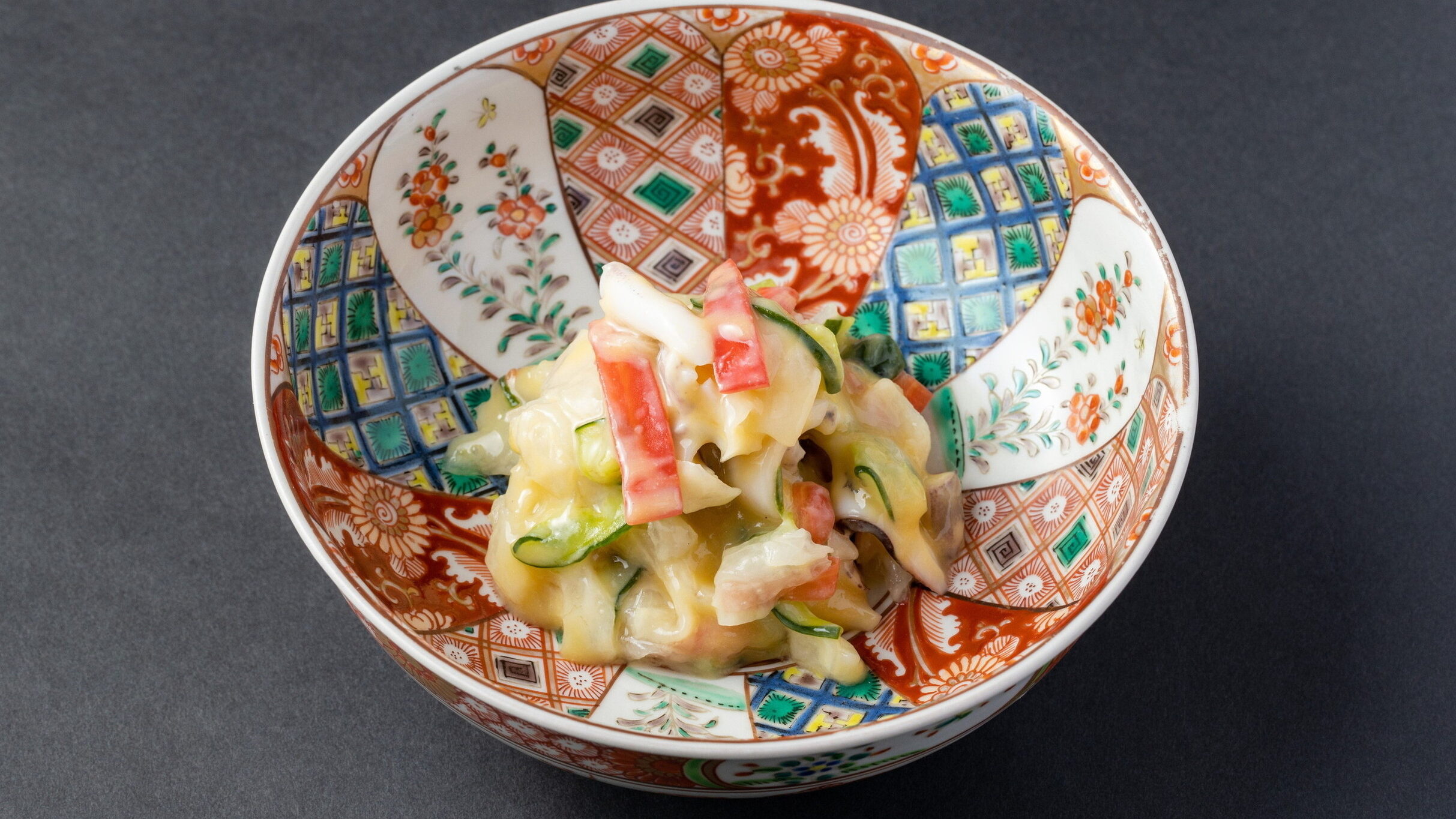
Hey there! Have you ever tried a Japanese dish called *kake-ae*? It’s basically a mix of seafood and veggies dressed with a tasty miso-vinegar sauce, and in Saga Prefecture, they make a super yummy version with squid called *ika no kake-ae*. It’s a popular everyday side dish, but it’s also a must-have at festivals and gatherings. The cool thing is, folks use whatever seafood is fresh and available, so you might find versions with sardines, mackerel, or even river fish depending on the area and season. But this squid version is a real treat with its tender texture and the tangy-sweet sauce!
Dish Name: Ika no Kake-ae
- Region / Location: Saga Prefecture
- Primary Area of Tradition: Throughout Saga Prefecture
- Main Ingredients: Squid, various vegetables (like daikon radish and carrots).
How It’s Eaten / Served
To make *ika no kake-ae*, the squid is cleaned, quickly blanched, and cut into strips. Daikon radish and carrots are also cut into strips and lightly salted. The dressing is made by thoroughly grinding toasted white sesame seeds in a mortar until the oil is released, then mixing in white miso, sugar, and vinegar. The squid and vegetables are then combined with this flavorful sesame-miso-vinegar dressing. Some people like to add a little kick with yuzu pepper paste or ginger to the sauce. It’s a simple yet delicious dish that’s enjoyed as a side dish.
Cultural Background and Preservation
*Kake-ae* is a type of mixed dish with seafood and vegetables that goes by different names across Japan, such as *oroshi-namasu*, *kaki-ae*, and *nuta-ae*. In Saga Prefecture, it’s known as *kake-ae* or *kakeyaa* and is a common part of the daily menu throughout the year. It’s also an indispensable dish for special occasions like festivals and large gatherings for rice planting or harvests. It was often served as a treat during these times when everyday meals might have been simpler. The type of seafood used varies depending on the household, season, and region. For example, areas near the Ariake Sea or Genkai Sea might use sardines, mackerel, or horse mackerel, while places with more rivers and creeks might use crucian carp. Mackerel, especially when it’s fatty in the fall around the time of autumn festivals, is often used then. When using oily fish, it’s filleted, lightly salted, rinsed with vinegar, and then pickled in vinegar before being added to the *kake-ae*. Squid and even whale meat are also sometimes used. Daikon radish, a common ingredient, becomes sweeter after the first frost, making the *kake-ae* particularly delicious during that time. *Ika no kake-ae* is commonly made at home and can also be found in local restaurants and even served in school lunches in Saga Prefecture, ensuring its continued tradition.
Additional information:
- Daikon Radish: A large white radish with a mild flavor, commonly used in Japanese cuisine, often grated or cut into strips.
- White Miso: A type of Japanese fermented soybean paste that has a sweeter and milder flavor compared to darker misos.
- Yuzu Pepper Paste (Yuzu Kosho): A Japanese condiment made from chili peppers, yuzu zest, and salt, offering a citrusy and spicy flavor.
- Blanching: A cooking process where food is briefly immersed in boiling water and then immediately transferred to ice water to stop the cooking process. This helps to retain the color and texture of the food.
The information about regional cuisine featured on this website (Piggy's Grandma of Japan) is summarized and adapted from the Ministry of Agriculture, Forestry and Fisheries of Japan (MAFF) website, "Our Regional Cuisines"Additional commentary is provided based on the unique experiences and perspectives of the site's editors.
The copyright for the original content regarding regional cuisine belongs to the Ministry of Agriculture, Forestry and Fisheries of Japan.
The summaries and adaptations published on this site are intended for informational purposes only. Piggy's Grandma of Japan does not guarantee the accuracy or completeness of this information. For the most accurate and complete details, please refer to the original pages on the MAFF website.

